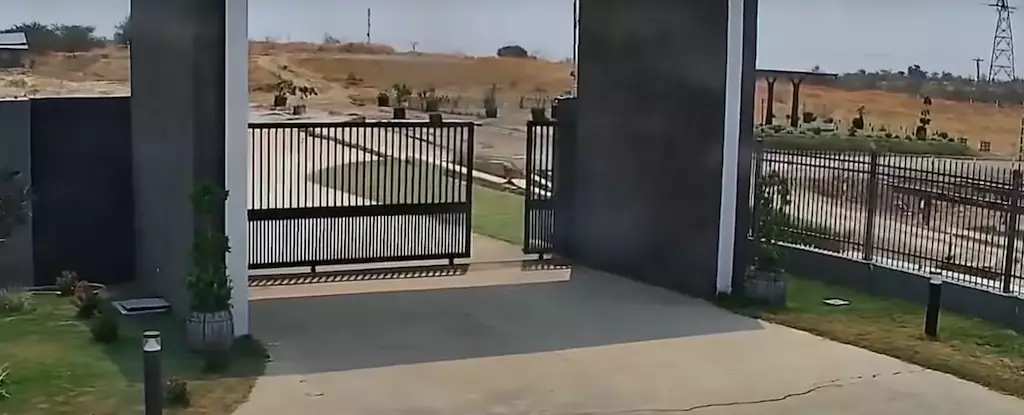The raw power of natural disasters often leaves humanity dumbfounded, and the recent seismic upheaval in Myanmar serves as a harrowing reminder of nature’s fury. On March 28, 2025, the country was rocked by a staggering magnitude 7.7 earthquake, leaving a tragic mark on the landscape and the lives of thousands. Unlike any other recorded event, this earthquake provided a chilling moment captured on video—an extraordinary glimpse of the Earth’s crust fracturing and shifting in real-time. The resulting footage, initially posted by Htin Aung on social media, depicts not just movement, but a profound moment of earth’s brutal transformation.
The video, taken from a security camera at a solar facility, transitions from a serene day to sheer pandemonium in a matter of seconds. This juxtaposition of calm before calamity starkly emphasizes how quickly life can turn from normalcy to chaos. Around the 14-second mark, viewers witness an earth-splitting rupture—ground that once held firm beneath our feet suddenly fracturing and yearning under the forces of nature. This is not merely a statistic; it’s a visceral experience. In those fleeting moments, the viewers feel the tremors of uncertainty, reminiscent of humanity’s vulnerability in the face of geological forces.
The Aftermath: A Stark Reality
The repercussions of this seismic event manifested as tragic losses—over 3,700 lives extinguished, thousands more injured, and countless families displaced. The initial shockwaves extended over 460 kilometers, with surface dislocation reported at more than 6 meters in certain areas. As much as numbers serve a vital role in assessing devastation, they often fail to capture the human experience—the fear, loss, and collective sorrow that accompany such tragedies. For residents close to the Sagaing Fault, these seismic threats come with a cruel regularity, rendering them perilously close to disaster.
Geophysicist Rick Aster’s insights highlight a rare aspect of the 2025 quake: it exhibited supershear characteristics, moving faster than the typical shear waves. This defined its intensity and potential for widespread catastrophe. When an event is labeled ‘supershear,’ it implies extraordinary danger—a phenomenon that inadvertently emphasizes the need for improved understanding and predictive measures in earthquake science. It challenges the perception of safety that many assume, especially in regions like Myanmar, where tectonic activity is an undeniable part of life.
The Broader Implications: Infrastructure and Preparedness
What transpired that day challenges not just geological understanding, but also urges a re-evaluation of urban planning and disaster preparedness in densely populated areas. The infrastructure failed in ways that reverberated beyond national borders; high-rise buildings in Bangkok crumbled under the weight of the following shocks, showcasing how interconnected our societal structures are, despite geographic distances. It highlights a cascading risk brought on by seismic catastrophes—one country’s crisis morphs into another’s challenge.
This catastrophe raises significant questions about national and regional preparedness. In a modern world equipped with technology that can forecast weather patterns, why do we falter when it comes to predicting and preparing for earthquakes? Scientists are delving deeper into the study of triggers and signs to better anticipate these threats, yet the question lingers: Are we taking adequate measures to fortify vulnerable regions? Time and again, history reveals that inaction leads to heart-wrenching losses. Strategies to bolster structural integrity and improve early warning systems must be prioritized.
Humanity’s Response: From Tragedy to Resilience
While raw data and scientific analysis are essential, they often neglect the human element at the center of these disasters. Communities grappled not only with physical loss but also with emotional devastation. In the face of unfathomable sorrow, however, there emerges a stark juxtaposition—resilience. Time and again, humanity has rebounded stronger after calamity. In the aftermath of the 2025 earthquake, the world witnessed an outpouring of support for those affected. It illustrates our collective spirit; we may falter, but we rise united to address the challenges laid before us.
This earthquake serves as a grim wake-up call for nations prone to seismic activities—a demand for drastic action that transcends borders and politics. By fostering a culture of preparedness, we not only protect ourselves but contribute to a safety net for future generations. In a rapidly changing world, where climate and tectonic shifts are all but guaranteed, the only response worth considering is one of proactive resilience—a commitment to prepare, adapt, and ultimately survive.

